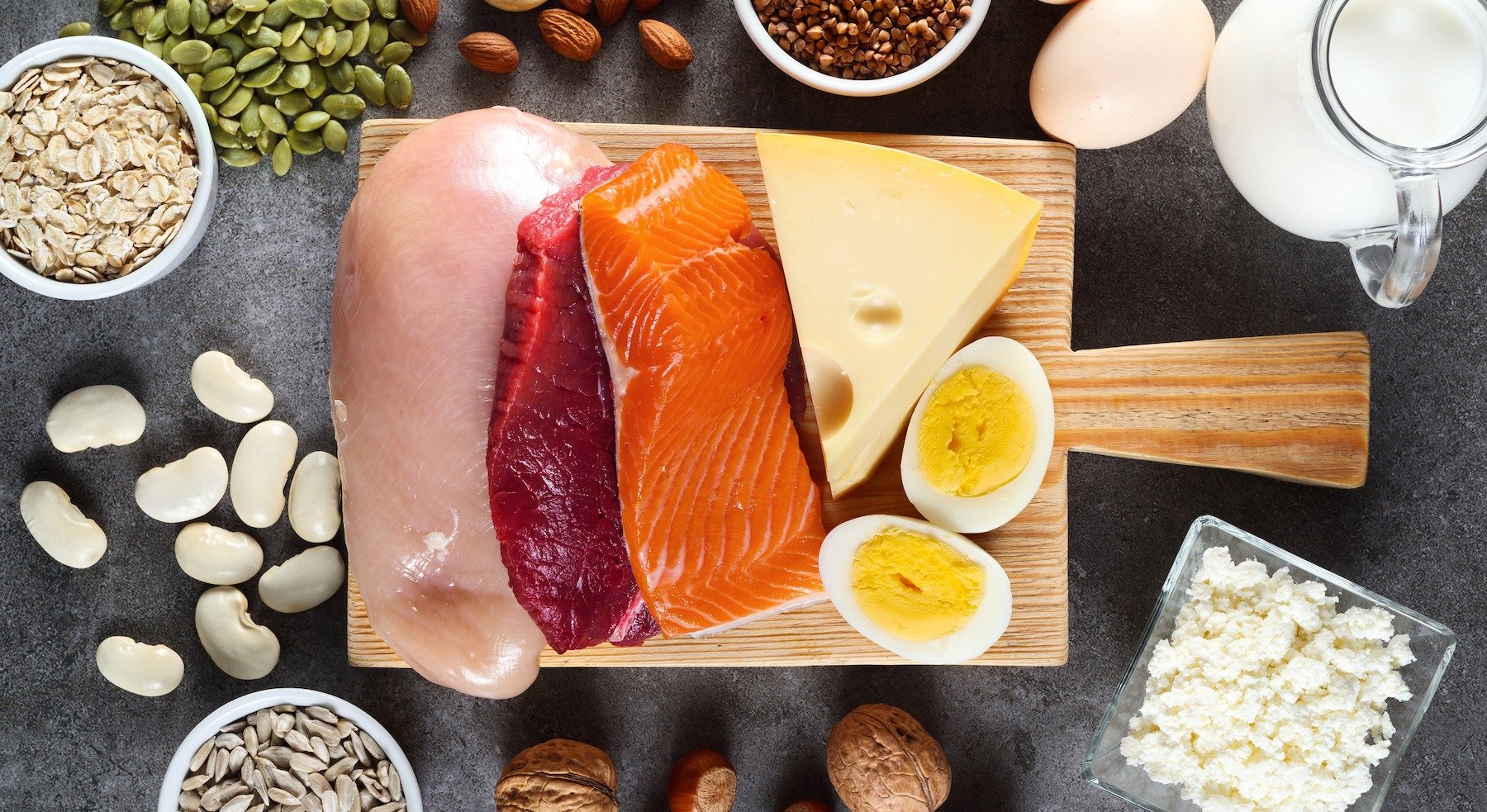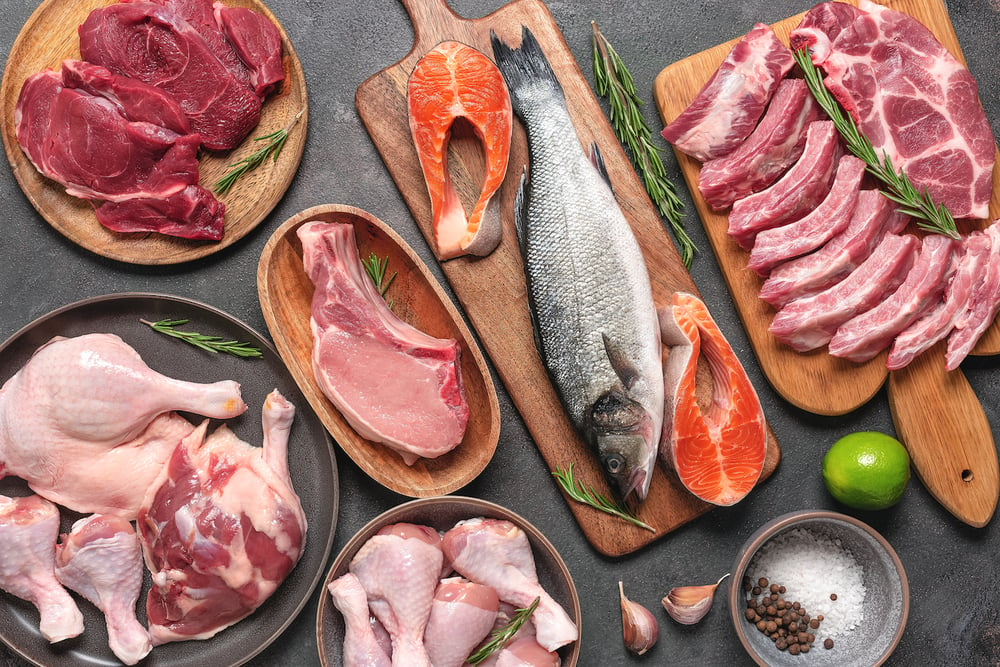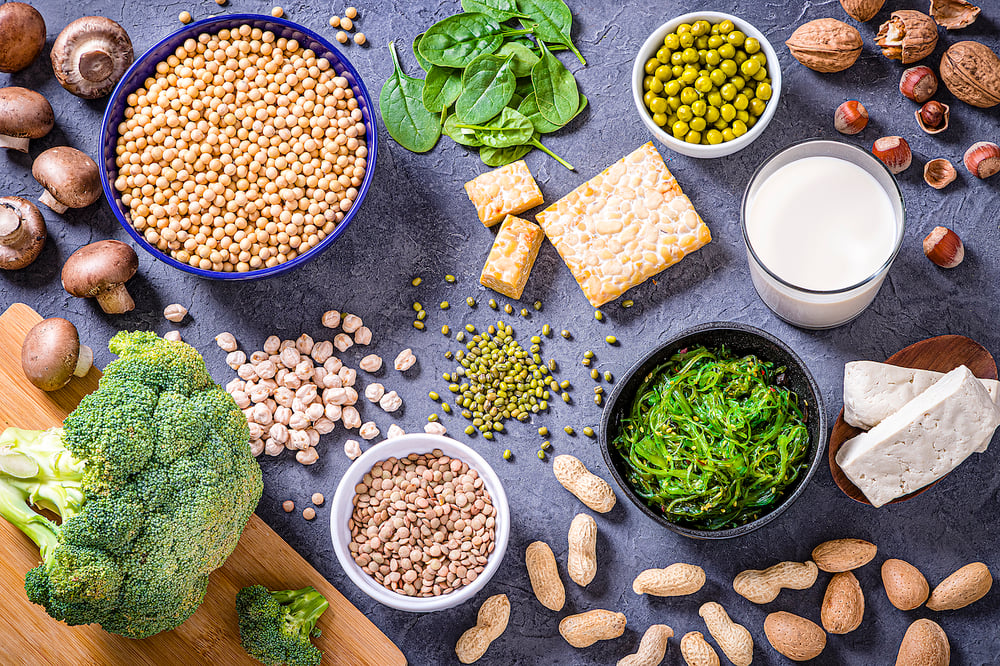
The importance of protein in losing weight
When we think of weight loss we think about reducing our consumption, but in the case of protein it is important that we maintain a good level of intake to support weight loss and essential functions around our body. However, that doesn’t mean a diet of steak 3 times a day, the key is a range of protein sources.
How protein supports weight loss
Protein reduces hunger
As we digest protein it suppresses levels of the ‘hunger hormone’ ghrelin. This means you’ll automatically want to eat less, without the need to ration yourself or consciously make your portions smaller. And because protein takes longer than carbohydrates to digest, it keeps you feeling fuller for longer. A sure-fire way to cut cravings.
Protein has a high thermic effect
The thermic effect of food (TEF) is an estimate of the amount of energy it takes your body to digest, absorb and metabolise what you’ve eaten. The higher the thermic effect, the harder your body has to work to break the food down. Protein requires the most effort, with about 20-30% of the energy in the protein being used for its digestion and metabolism. In comparison, carbohydrates have a TEF of 5-15% and fats just 5-10%.
Protein builds and repairs the body
Protein is broken down into molecules called amino acids. These form the ‘building blocks’ for many of your body’s functions, including production of hormones, antibodies and repairing muscles, skin and hair. Without enough protein in your diet, your body will look for another source; your muscles. To avoid losing muscle mass and leaving your body struggling to repair itself, make sure you’re getting your protein.
Meat-based protein sources
Meat, poultry and fish, are often the first proteins that spring to mind and are a great source of complete protein and other essential nutrients.

Poultry
White meat or dark? There are two types of meat within poultry. The white meat is made up of fast-twitch muscle fibres and is found in the breast and wing of the bird. The muscles here have evolved to deliver fast bursts of force.
The dark meat is comprised of slow twitch muscle fibres that are used for more sustained activity like running. The dark meat can be found primarily on the thigh and drumstick.
White meat poultry contains about the same amount of protein as the dark meat, so both are considered healthy sources of protein. If you have to choose, opt for the white meat as it naturally carries less fat than the dark meat.
To further reduce the fat content of poultry remove the skin before eating.
Fish and seafood
Oily fish such as mackerel, salmon, sardines, anchovies, trout and tuna contain high amounts of Omega-3 fatty acids that may help to prevent heart disease. Fish and seafood are also high in B vitamins.
Fish is best cooked by steaming, baking or grilling. Deep-fried, battered or breaded fish should be avoided for weight loss as the batter, bread and additional oil used for frying can greatly increase the amount of energy consumed per serving.
Red meat
Beef, pork and lamb are all good sources of protein, and you should look to choose the leanest cuts. Red meat can sometimes be high in saturated fats, which have been linked to rising cholesterol levels. Increased cholesterol may cause fatty deposits in your blood vessels, which raises the risk of heart problems or stroke.
Processed versions of red meat such as sausages, bacon, and deli meats can often be high in salt and other additives and are best avoided or eaten in moderation.
Meat-free protein sources
For vegetarians or individuals who would like more variation in their diet, adding in more plant proteins can offer some additional taste and texture options to keep your meals that much more interesting.

Plant protein and carbohydrates
Studies have shown that there is a link with increased plant protein consumption and reduced risk of cancer, cardiovascular disease and type 2 diabetes. However, it is important to remember that plant proteins such as lentils, beans, peas and quinoa do still contain a moderate to high amount of carbohydrates. So, while you are losing weight, they should be kept to a minimum.
Meat-free protein to try
There are many meat alternatives in supermarkets these days, but just because they are plant-based doesn’t always mean they are a good choice. As for all foods, anything that is heavily processed is best avoided. A good indication of whether a product is ultra-processed is the number of ingredients listed, as well as the number of ingredients you don’t recognise!
That doesn’t mean you have to go full carnivore, though. Below is a list of high-protein, low-carb options you might want to incorporate into your diet:
- Greek yoghurt
- Cheese (Parmesan, mozzarella, feta, cottage and cream cheeses are some with the highest protein content)
- Eggs – as a snack or part of a meal
- Soy – tofu, edamame, natto, tempeh
- Nuts, seeds and nut butter
- Seitan – made from wheat gluten. Like tofu, it’s used as a meat substitute and often found in burgers
When animal proteins are part of your diet, there is no need to worry about the incomplete proteins in plant foods. However, vegetarian and vegan diets need more careful planning to ensure they are not lacking in important nutrients. Don’t forget to combine your protein sources with salads and vegetables to help keep you satiated and topped up with all the fibre, vitamins and minerals your body needs to balance your blood sugar.
